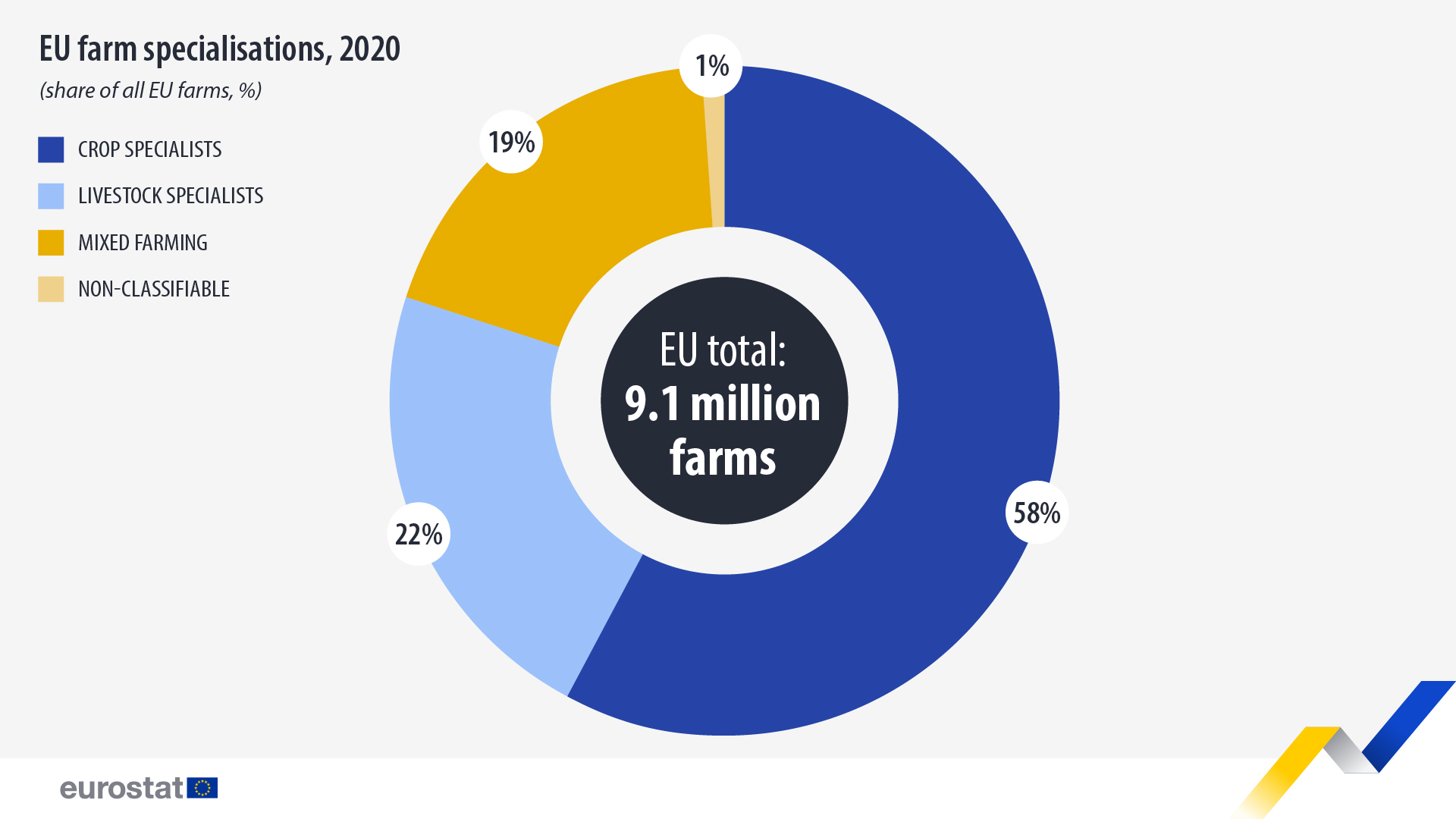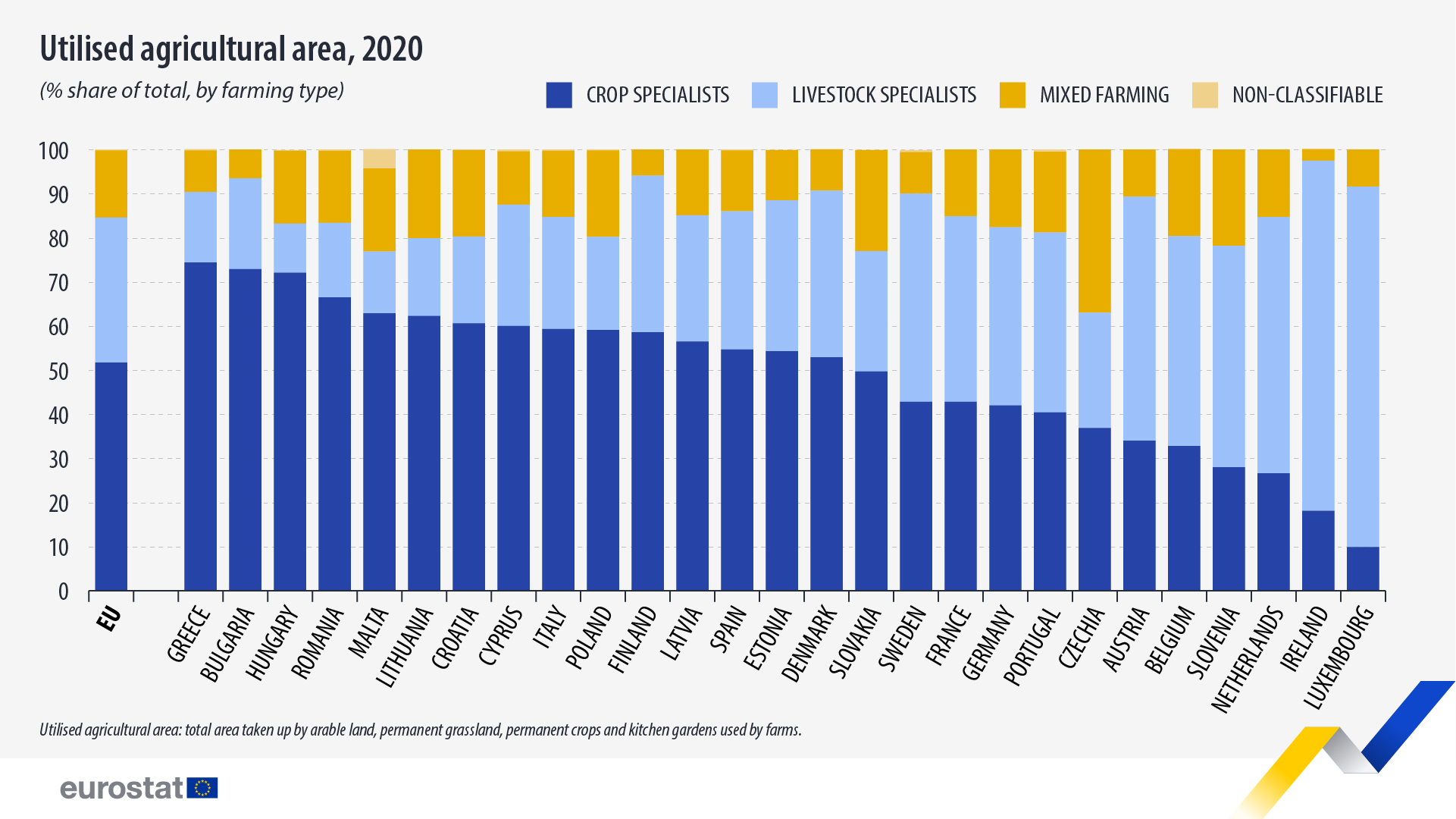In 2020, there were 9.1 million farms in the EU. This is an estimated 5.3 million fewer farms than in 2005 (the equivalent of a decline of about 37%).
Farms can be classified according to the activities that dominate farm income. Some farms earn income from diverse activities (mixed farming), while others earn income mainly from either crops or livestock. Specialised farming refers to when one activity accounts for at least two-thirds of the total standard output of a farm.
Although there were fewer EU farms of all types in 2020 than in 2005, declines in some types of farms were much sharper than others; there were 2.6 million fewer mixed farms, 1.6 million fewer livestock specialist farms and 0.9 million fewer crop specialist farms.

Source dataset: ef_lus_main
Almost three-fifths (58%) of all farms in 2020 were categorised as specialist crop farms: just over one-third (34%) specialised in field cropping, about one-fifth (22%) in permanent crops and a small share (2%) in horticulture.
Slightly more than one-fifth (22%) of the EU’s farms were specialist livestock farms, with specialisation in dairying being the most common type (5% of all farms), followed by cattle-rearing and fattening, poultry, and sheep, goats and other grazing livestock (each 4%).
In 2020, just under one-fifth (19%) of all farms in the EU were mixed farms, meaning that they had multiple crops and/or livestock without a single activity making up at least two-thirds of standard output.
Some farms (1% of the total) could not be classified because they are subsistent in nature or because they produce goods for which no standard output can be calculated.
Half of the EU’s utilised agricultural area found on crop specialist farms
In 2020, just over half (52%) of the EU’s utilised agricultural area (UAA) was found on crop specialist farms, with about one-third (33%) on livestock specialist farms and the rest on mixed farms (15%). At country level, the share of UAA managed by each specialisation type strongly correlated with the number of farms by type of specialisation.

Source dataset: ef_lus_main
In broad terms, high proportions of crop specialist farms were observed in many Eastern European countries, such as Bulgaria (73%), Hungary (72%), and Romania (67%), as well as in Mediterranean countries like Greece (74%), Malta (63%), and Croatia (61%). This often reflected favourable conditions for growing particular kinds of cereals, fruit and/or olives.
Specialist livestock farms were more prevalent in several countries in northwest Europe, such as Luxembourg (82% of all farms), Ireland (79%) and the Netherlands (58%).
